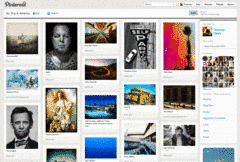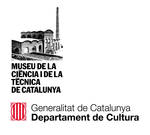22 October 2012
Social Networks and cultural heritage. The case of Pinterest
The presence of museum and institution in the Web is nowadays a must to deal with the present communication environment. The same is true for the social networks, which allows a very direct communication and interaction with followers and people interested in the topics.
While it is easy to measure the number of followers that a cultural institution attracts on Twitter or Facebook, it’s important to be objective about the reason why social media are used.
As stated by MuseumNext’s Jim Richardson, “engagement is quality rather than quantity – regular sharing between a number of fans on Facebook demonstrates more engagement than a high number of fans who only leave one post on the wall and never come back” .
Experts dealing with cultural heritage and digital media agrees on a keyword that should highlight the social experience of every kind of institution, but most arguably the cultural’ ones: engagement.
Talking about engagement in social media, one rapidly growing social network seems to be more direct than others in terms of engagement: Pinterest.
Pinterest is the fastest growing social network at this time, but still its advantages seems to be not fully exploited with regards to cultural heritage and cultural promotion.
The basic idea which underlies Pinterest is the possibility to create and share boards made with interesting pictures you pinned on it. Therefore, the social network is fully fledged to host the activities and initiatives of museum, institutions and every single entity which has to deal with culture and heritage. Creating boards with images from latest happenings or events related with cultural heritage can give new possibilities to communicate the heritage in a creative and social way.
The peculiar visual experience offered by Pinterest is also considered to be more immediate for people, creating thus a more direct and engaging social experience.
Studies and analytical breakdowns point out two main facts about Pinterest. First of all, among the fast grow of Pinterest, a particular demographic group is the most prominent: the young people, which can be considered one of the main cultural institutions’ target group. Second, the most common behavior within the website is the re-pin, or the share of content which are actually not generated by the user going to share them.
The key for a successful communication on Pinterest is therefore to provide great pictures that people will want to pin. Effective web presence, in fact, is a key factor for a cultural institutions: providing quality contents which are worth to share is a way to achieve this effectiveness.
More and more institutions are opening their exhibition on Pinterest, sharing images of their collections and eventually providing contents specifically created for the social network. For instance, Metropolitan Museum of Art based in New York is using Pinterest to showcase part of its collection, categorizing the items into creative boards pinned with pictures.
Interesting example of museums and cultural institutions on Pinterest can be found here
Stefano Sbarbati
back







